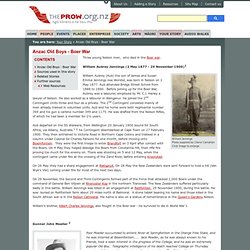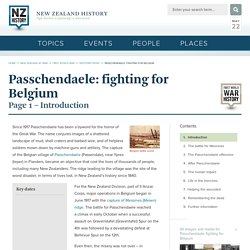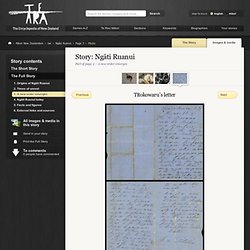

New Zealanders in World War II. This resource list is designed to guide readers to sources of information on the men and women who served in the New Zealand forces during the second World War, including information on the major battles of the war in which New Zealanders took part and on the armed services of which they were members.

In addition, resources are listed about the work of those who remained in New Zealand and the impact of the war in this country. Sources include books, pamphlets, microfiche publications, CD-ROMs and relevant web sites. Links to the libraries’ catalogue and to the Internet are also provided. All the sources listed are located in the Aotearoa New Zealand Centre at Central Library Manchester, although there may be borrowing copies of some items in other parts of the library. Growing up in New Zealand 1925-50 - Part 15 - World War 2, New Zealanders at Home during WW2, Petrol Rationing, Petrol Coupons, Food Rationing, Food Coupons, Clothes Rationing, Clothing Coupons, Landgirls, Linen Flax, Tobacco.
Growing up in New Zealand 1925-50 Part 15 - At Home In New Zealand During World War 2Dorothy - 16/03/01 Restrictions on travel, rationing, different roles for women.

Day to day activities for those in New Zealand were affected by all sorts of restrictions. Women who had stayed at home took jobs vacated by men serving in the armed forces, but also had to work hard at home on the economical routines of the Depression because goods of all kinds were so precious. Women as land girls Pat H has vivid memories of her years as a land girl. Landgirls were supposed to live with the family and eat meals with them. The girls were supposed to have time off once a month. Petrol rationing During the war petrol was strictly rationed - about two gallons a month, depending on the size of the car. New Zealand and the Second World War. Anzac Old Boys - Boer War. Three young Nelson men, who died in the Boer war..

William Aubrey Jennings (2 May 1877 - 29 November 1900)1 William JenningsPhoto supplied by Cheryl CarnahanClick image to enlarge William Aubrey (Aub) the son of James and Susan Emma Jennings nee Worster, was born in Nelson on 2 May 1877. Aub attended Bridge Street School from 1888 to 1890. Before joining up for the Boer War, Aubrey was a labourer, employed by Mr. Aub departed on the SS Waiwera, from Wellington 20 January 1900 bound for South Africa, via Albany, Australia.1 T he Contingent disembarked at Cape Town on 27 February 1900.
On 26 May they had a sharp engagement at Rietspruit. Evening Post — 11 October 1932 — PASSCHENDAELE. Passchendaele: fighting for Belgium. Since 1917 Passchendaele has been a byword for the horror of the Great War.

The name conjures images of a shattered landscape of mud, shell craters and barbed wire, and of helpless soldiers mown down by machine-guns and artillery. The Passchendaele offensive. Ellesmere Guardian — 14 October 1941 — AT TOBRUK. Evening Post — 15 January 1941 — TOBRUK SIEGE. Vietnam - My Father's War. Tītokowaru’s letter – Ngāti Ruanui. Tītokowaru wrote this famous letter, ‘I shall not die’, as he marshalled support against government forces.

But when his people mysteriously withdrew the night before the final battle at Taurangaika, the settlers took control and Ngāti Ruanui paid for it with the loss of their land. The letter reads: Warekura 25 Hune /68 [1868] Ki a Puano ma, he kupu ano koutou. Kati te haere i nga rori me waka mutu rawa te haere i nga rori e anga atu ana ki Mangamanga [Waihī].
Kei takoto koutou ki nga rori hei kai ma nga manu o te rangi ma nga kireke o te parae maku ra nei. A translation is as follows: Warekura 25 June /68 [1868] To Puano and the others. About this item Alexander Turnbull Library, Riwha Titokowaru Collection Reference: MS-Papers-3006-02 Permission of the Alexander Turnbull Library, National Library of New Zealand, Te Puna Mātauranga o Aotearoa, must be obtained before any re-use of this image. How to cite this page: Tony Sole. TITOKOWARU. Maori warrior.

A new biography of Titokowaru, Riwha appears in the Dictionary of New Zealand Biography on this site. A chief of Ngati Ruahine tribe of South Taranaki, Titokowaru was prominent as a prophet and priest. He was responsible for organising a campaign against Government forces by gathering picked fighting men around him from neighbouring tribes. A most skilful warrior, he was second only to Te Kooti in guerilla warfare and trained his men in bush fighting, surprise attacks on small military posts, ambushing, and enticing untrained white troops into unfamiliar terrain. He revived cannibalism and boasted in a letter: “I have begun to eat the flesh of the white man, I have eaten him like the flesh of the cow, cooked in a pot”. Titokowaru's pa was Te Ngutu o te Manu, deep in the rata forest near Hawera. His most famous victories were at Te Ngutu o te Manu and Moturoa where Government forces were heavily defeated.
By John Bruce Palmer, B.A., Curator, Fiji Museum, Suva.